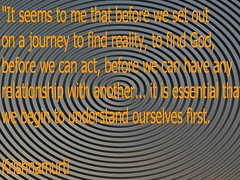 |
| Image via Microsoft Office |
Writers groups. Some authors swear by them, others dismiss them. Some thank their writing groups for helping to bring about their novels' success. Others regard such groups as social gatherings for opinionated people who try to rewrite your novel—their way.
I’ve experienced the best and worst of writers groups, and, for me, the pros far outweigh the cons. At their best, each member of the group responds as if he or she were picking up your novel off the rack—the way a paying customer might respond!
Valuable input from fellow reader-writers can expose problems in story logic, how your characters come across, and even mundane considerations such as grammar and punctuation—problems that might cause an editor to reject the manuscript you’ve spent years working on or cause the reader to put your book back on the rack.
I’m privileged to belong to two critiquing groups. The first is a generalist group with writing interests ranging from fantasy to domestic violence, from horror to music. The second group focuses on children’s literature such as picture books and mid-grade level fiction. Both groups have given me broad insights into the publishing world of today as well as very specific feedback on what works and what doesn’t in my stories.
Here are some of the valuable pieces of advice or questions I’ve received recently on my novel-in-progress, The Power Club ™:
- Why does a bordered section of town described as only a few acres long have a five-lane street running through it? (I included the five-lane street so one of my characters could demonstrate his power—by leaping over traffic—but, as my reviewers pointed out, it makes no sense to have heavy traffic in such a small area.)
- The people who live inside this area cannot leave it without government permission, yet the area includes a sporting goods store that sells guns and other hunting equipment. (I included this scene to show two older kids bonding in a way that excludes my main character, Damon. I relied on my memories of growing up in northwestern Missouri, where hunting was (and still is) a major preoccupation of adolescent boys. I need to either find another way for the two kids to bond or explain why hunting equipment is allowed.)
- Slow down the narrative so that readers don’t miss a character with a particularly cool power. (The Power Club contains numerous kids with super-powers, some of whom are throwaway characters. However, readers are often intrigued by such characters and want to know more about them.)
- Why is it that some characters develop powers before adolescence? Don’t they have to be teenagers for their powers to kick in? (This comment was made by a writing group member whose main familiarity with super-heroes is the X-Men movie franchise. I hastened to point out that the rules of my world work differently than the rules in the X-films. However, it’s worth knowing that many of my readers will associate my characters with other familiar characters.)
- How do the physics of super-powers work? (I’ve pretty much ignored this consideration; to me, nothing destroys the fantastic world of super-heroes quicker than long-winded pseudo-scientific explanations (Treknobabble). However—as one group member pointed out—if I’ve got a 30-foot-tall character leaping over traffic, there should be shock waves when he lands. )
While writing, it's easy to get caught up in a particular scene or character; after all, my focus in writing the first draft is on what this scene is about What am I trying to accomplish here? Therefore, it's easy to overlook "side" issues or to think they do not matter. But when members of my critiquing groups notice them or think they're important, I know I need to look at the story again.
Not all critiquing groups work for everyone, and it may take some digging to find one that works for you. But when you find such a group, be open to every honest reaction you receive. It’s better to make these discoveries about your story before it finds its way into the hands of an editor or a paying reader.





